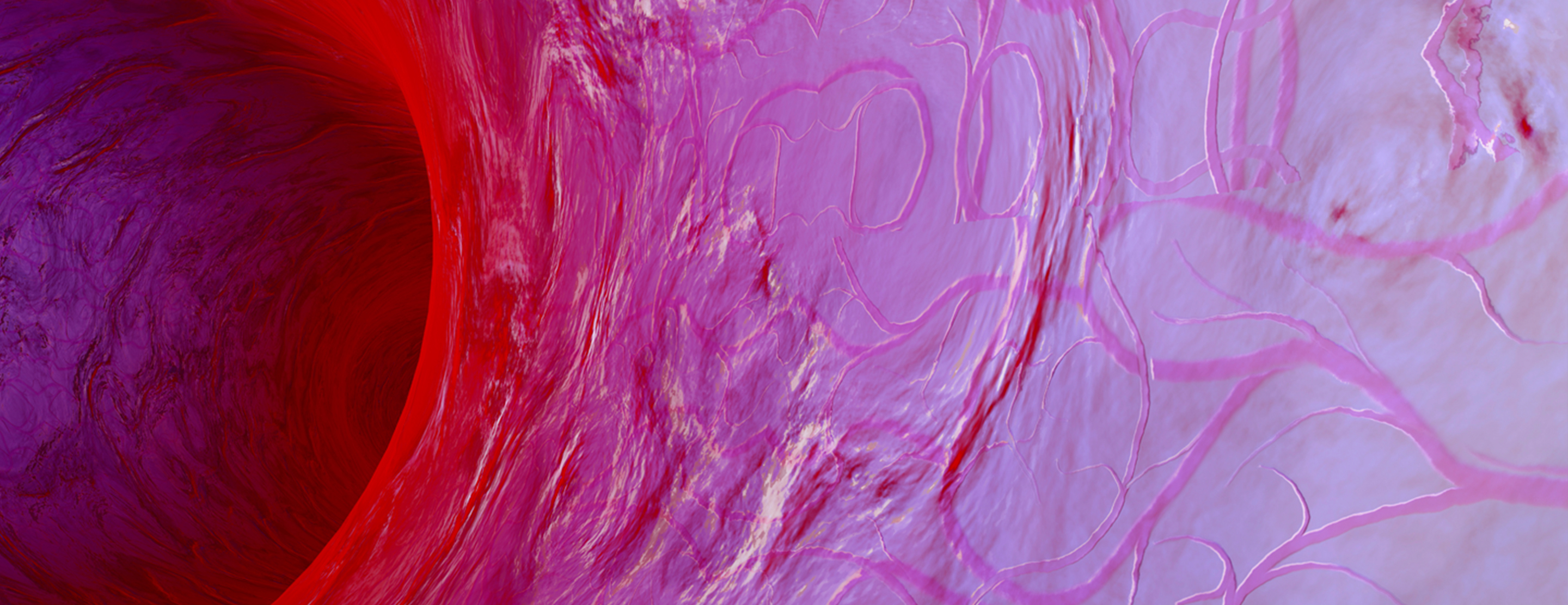Microvascular head and neck reconstruction is a technique for rebuilding the face and neck using blood vessels, bone and tissue, including muscle and skin from other parts of the body. The technique is one of the most advanced surgical options available for rehabilitating surgical defects that are caused by the removal of head and neck tumors.

Microvascular Head and Neck Reconstruction
This technique involves harvesting flaps of healthy tissue — where the tissue is not as important — with the blood supply from remote sites in the body. The tissue is then transferred to the recipient wound bed, where it is much more useful in reconstructing the affected area of the head and neck. A microscope is used to suture the blood vessels of the flap to blood vessels in the neck, allowing the tissue to live as if it were back in its original location.
Conditions Treated
Microvascular head and neck reconstruction is used to treat head and neck cancers, including those of the larynx and pharynx, oral cavity, salivary glands, jaws, calvarium, sinuses, tongue and skin. Cancer treatment usually involves some combination of surgery, radiation therapy and chemotherapy — any of which can result in significant treatment-related side effects. Treatment of head and neck cancer can affect the appearance of the face and neck, as well as various functions, including: speech, sight, smell, swallowing and taste. Microvascular surgery is used to return the head, face and neck to as close to normal as is possible.
The technique is also used to treat other conditions including:
- Osteoradionecrosis of the mandible, which is a serious complication of radiation therapy to the head and neck
- Oronasal fistula, which is a hole between the mouth and nose cavity
- Nasal obstruction
- Trismus, which is an involuntary contraction of the mastication muscles
- Velopharyngeal insufficiency, which is a disorder resulting in the improper closing of the velopharyngeal sphincter (soft palate muscle in the mouth) during speech
- Contour irregularities of the face and neck following surgery
- Non-healing wounds of the head and neck
- Nasal stenosis or deformation following cancer surgery
Preparing for Free Tissue Transfer
If you undergo this treatment, there are many things you will need to do to prepare for a free tissue transfer. If being performed as a treatment for a malignant tumor of the head and neck, then the procedure will be performed by two surgical teams. One team dedicated to removal of the tumor and any potential involved lymph nodes. And a second team dedicated to reconstruction of the defect.
The Night Before Treatment
Do not eat or drink after midnight. Take your regular medications the day before and the morning of the procedure with a small amount of water.
Morning of Treatment
After the procedure, you may be in the hospital for seven to 10 days. Bring your medications so they can be added to your post-operative regime, if appropriate. Slipper-socks and robes are provided. Please bring reading materials, music or videos to keep you entertained in the patient waiting area. Remember to leave your valuables, such as jewelry and large sums of cash at home.
Make certain you know which UCSF hospital will be the location for your operation. An escort will take you to the pre-operative area. A family member or friend may accompany you there. You will be asked to put on a hospital gown and a nurse will start an intravenous (IV) line through which you will receive fluids and a mild sedative during the procedure. The same IV is used to administer the contrast agent for your imaging studies.
Procedure
Several types of microvascular reconstruction techniques may be used, including:
- Free muscle transferIn this procedure, a surgeon harvests a muscle from the latissimus (back) or rectus abdominus (abdominal region) for reconstruction of the skull base or cranial vault. Muscle is particularly useful for sealing off the central nervous system and for promoting healing of complex wounds.
- Free bone transferBony defects are often among the most difficult reconstructions as precise alignment of bone is required, as well as cutaneous (skin) coverage. Bone is most commonly used for mandibular reconstruction, but new innovation allows its use for midface and orbitomaxillary reconstruction. If the fibula is not available for transfer, another option is the latissimus-serratus-rib free flap. This allows the transfer of an abundant volume of bone, muscle and skin in patients, even with advanced peripheral vascular disease, although the bone quality is not as good when compared with the fibula bone.
- Free skin and free fat transferThe radial forearm has long been the dominant flap used for cutaneous coverage. However, the anterolateral thigh flap is being used more in head and neck reconstruction because it has proven to be an ideal donor site with reliable vascularity, ease of harvest and versatility. Tissue types that may be safely harvested from this donor site include: skin, skin and fat, fat and fascia or fascia alone. The abundance of tissue available and the minimal morbidity from this site permits reconstruction of contour defects of the head and neck, pharyngeal reconstruction following laryngectomy, mucosalized tongue reconstruction and reconstruction of nasal lining and neck skin.
The technique that allows this precise targeting within the brain is called stereotaxy. Stereotactic radiosurgery is performed with the aid of imaging techniques called CT Scan, MRI and angiography.
If the reconstruction is targeting your mouth, lower jaw bone, neck or throat surgeons will often perform a temporary tracheotomy to ensure that your breathing will be safe. They may also place a temporary feeding tube to ensure that you may be fed while your wounds heal.
Recovery
After surgery patients are often sedated for the first night, and awoken the morning following surgery. Patients typically spend two days in the intensive care unit, followed by an additional five to seven days in a regular hospital room before discharge. Patients will be assessed by physical therapy and in the event of extensive wound care or rehabilitation needs, they may be transferred to a rehabilitation hospital or be discharged with home nursing care.
UCSF Health medical specialists have reviewed this information. It is for educational purposes only and is not intended to replace the advice of your doctor or other health care provider. We encourage you to discuss any questions or concerns you may have with your provider.









